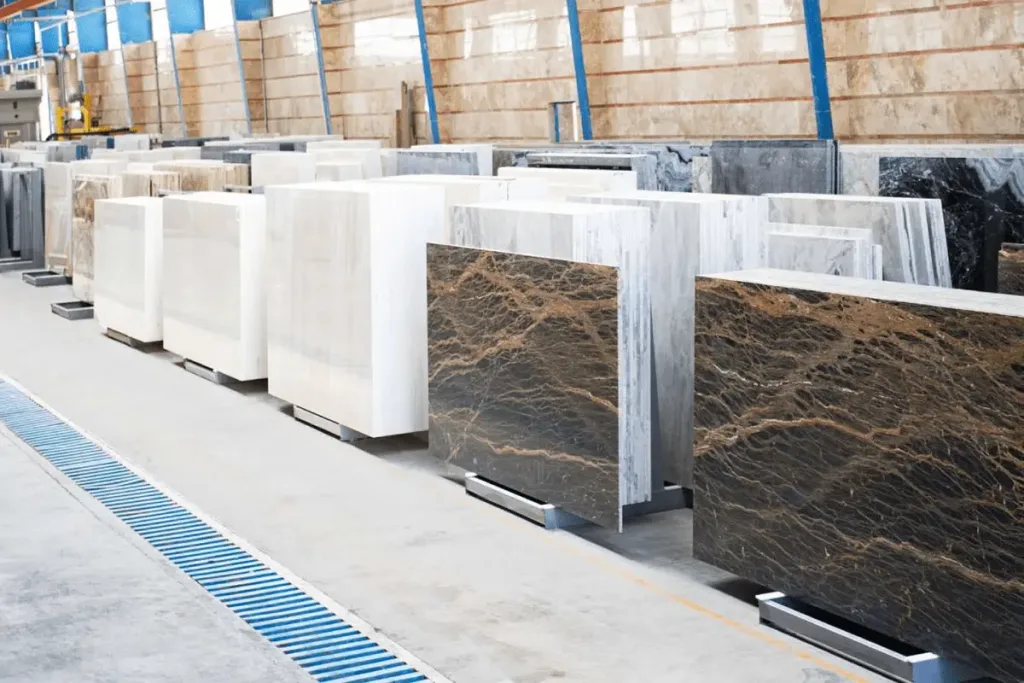Stone has been an essential element in architecture and luxury design for centuries. Whether used for countertops, flooring, fireplaces, or decorative features, different types of stone offer unique characteristics in durability, texture, and appearance. The fabrication process plays a key role in shaping these raw materials into stunning pieces that blend functionality with artistic elegance.
This blog explores various types of stone materials, surface finishes, cutting techniques, and the fabrication process that define high-end craftsmanship.
Types of Stone Materials
Different stone varieties are used in fabrication, each bringing unique aesthetics and properties. The most commonly used materials include:
Natural Stones
- Marble – Elegant with soft veining, perfect for luxury spaces but requires careful maintenance.
- Granite – Extremely durable, scratch-resistant, and available in a wide range of colors.
- Quartzite – A natural stone with the durability of granite and the beauty of marble.
- Travertine – Has a textured surface, often used in classical architecture and flooring.
- Onyx – Translucent and exotic, ideal for backlit stone applications.
- Soapstone – Smooth and dense, known for its heat resistance in kitchen designs.
- Limestone – Warm and earthy tones, best for wall cladding and fireplaces.

Engineered & Composite Stones
- Quartz (Engineered Stone) – Man-made with resin and quartz particles, highly durable and customizable.
- Sintered Stone – Ultra-compact material with extreme durability, heat resistance, and minimal porosity.
- Porcelain Slabs – Thin yet strong, suitable for countertops, flooring, and even wall applications.
Selecting the right material depends on durability, texture, heat resistance, and aesthetics, ensuring it meets the demands of the project.
Stone Finishes & Surface Treatments
Once the material is selected, various finishing techniques determine the final texture and appearance. Common surface finishes include:
✅ Polished Finish – Glossy, reflective surface that highlights stone patterns and enhances color vibrancy.
✅ Honed Finish – Matte and smooth, reducing glare and giving a softer, natural look.
✅ Leathered Finish – Textured with slight dimples for an organic feel. Often used in granite and quartzite.
✅ Flamed Finish – Rough surface achieved through heat treatment, common in outdoor applications.
✅ Brushed Finish – Light texture with softened surface details, ideal for modern aesthetics.
✅ Sandblasted Finish – Creates a slightly grainy, slip-resistant texture.
✅ Tumbled Finish – A weathered, antique appearance achieved through mechanical tumbling.
The choice of finish depends on functionality, maintenance, and the desired aesthetic.
Stone Cutting & Edge Profiles
Cutting Techniques
Precise cutting methods shape stone slabs into customized designs. The most commonly used techniques include:
🔹 Waterjet Cutting – High-pressure water mixed with abrasives creates intricate and detailed cuts with extreme precision.
🔹 CNC Milling – Computer-controlled milling machines refine shapes and carve patterns into stone.
🔹 Bridge Saw Cutting – Traditional large-scale cutting for shaping countertops and panels.
🔹 Hand Carving & Chiseling – Used for artistic details and unique craftsmanship in luxury projects.
Edge Profiles
Different edge treatments influence the final visual appeal of stonework:
✅ Straight Edge – Clean and minimal for contemporary designs.
✅ Bullnose Edge – Rounded finish for soft and smooth aesthetics.
✅ Ogee Edge – Decorative and curved, perfect for elegant spaces.
✅ Beveled Edge – Angled cut for a sharp and modern look.
✅ Waterfall Edge – Seamlessly flowing down the side of countertops or islands.
✅ Mitered Edge – Clean-cut joining for large-scale seamless surfaces.
Selecting an edge profile ensures structural integrity and enhances the design’s aesthetics.
Fabrication Process: From Raw Stone to Finished Masterpiece
Stone fabrication is an intricate blend of technology and craftsmanship. The steps include:
- Material Selection & Slab Inspection – Choosing high-quality stone slabs with ideal veining and structural consistency.
- Precision Measuring & Templating – Digital scanning ensures exact measurements for cutting.
- Cutting & Shaping – Using waterjet, CNC, or saws to refine forms and edges.
- Surface Finishing – Polishing, honing, or texturing the stone for its final aesthetic.
- Sealing & Protection – Applying sealants to prevent stains and enhance longevity.
- Installation & Final Touches – Ensuring flawless placement and integrating elements such as embedded lighting or decorative inlays.
Modern fabrication techniques combine artistry with advanced machinery, pushing boundaries in stone craftsmanship.
Conclusion: Precision and Elegance in Every Cut
Stone fabrication is a fusion of nature, technology, and craftsmanship, transforming raw materials into architectural beauty. Whether designing bespoke kitchen countertops, intricate stone walls, or luxurious vanities, the selection of stone, finishing details, and fabrication precision create breathtaking results.
As technology advances, techniques like waterjet cutting, CNC fabrication, and sintered stone innovation continue to redefine what’s possible in luxury stone craftsmanship.




